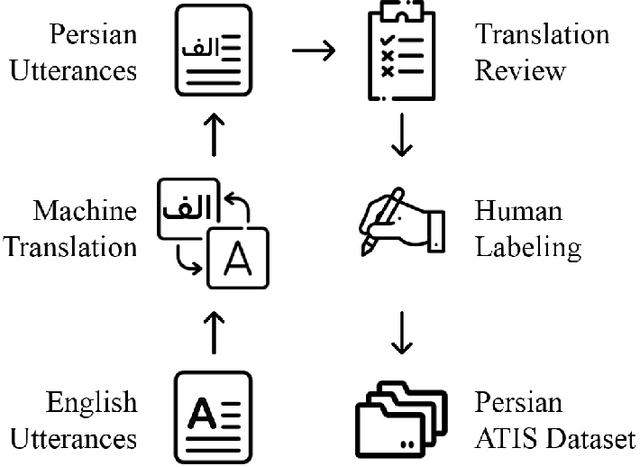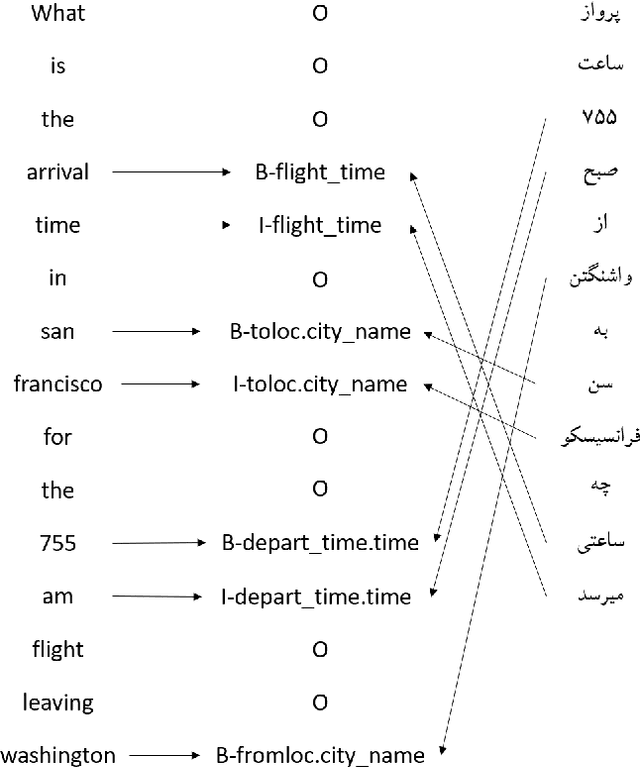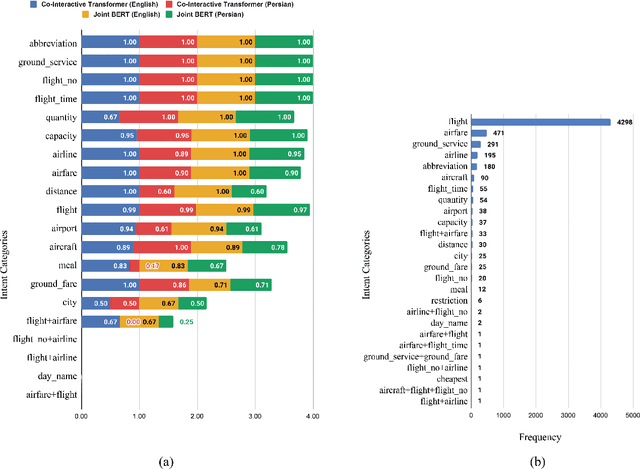Masoud Akbari
A Hybrid Architecture for Out of Domain Intent Detection and Intent Discovery
Mar 07, 2023Abstract:Intent Detection is one of the tasks of the Natural Language Understanding (NLU) unit in task-oriented dialogue systems. Out of Scope (OOS) and Out of Domain (OOD) inputs may run these systems into a problem. On the other side, a labeled dataset is needed to train a model for Intent Detection in task-oriented dialogue systems. The creation of a labeled dataset is time-consuming and needs human resources. The purpose of this article is to address mentioned problems. The task of identifying OOD/OOS inputs is named OOD/OOS Intent Detection. Also, discovering new intents and pseudo-labeling of OOD inputs is well known by Intent Discovery. In OOD intent detection part, we make use of a Variational Autoencoder to distinguish between known and unknown intents independent of input data distribution. After that, an unsupervised clustering method is used to discover different unknown intents underlying OOD/OOS inputs. We also apply a non-linear dimensionality reduction on OOD/OOS representations to make distances between representations more meaning full for clustering. Our results show that the proposed model for both OOD/OOS Intent Detection and Intent Discovery achieves great results and passes baselines in English and Persian languages.
A Persian Benchmark for Joint Intent Detection and Slot Filling
Mar 01, 2023



Abstract:Natural Language Understanding (NLU) is important in today's technology as it enables machines to comprehend and process human language, leading to improved human-computer interactions and advancements in fields such as virtual assistants, chatbots, and language-based AI systems. This paper highlights the significance of advancing the field of NLU for low-resource languages. With intent detection and slot filling being crucial tasks in NLU, the widely used datasets ATIS and SNIPS have been utilized in the past. However, these datasets only cater to the English language and do not support other languages. In this work, we aim to address this gap by creating a Persian benchmark for joint intent detection and slot filling based on the ATIS dataset. To evaluate the effectiveness of our benchmark, we employ state-of-the-art methods for intent detection and slot filling.
 Add to Chrome
Add to Chrome Add to Firefox
Add to Firefox Add to Edge
Add to Edge